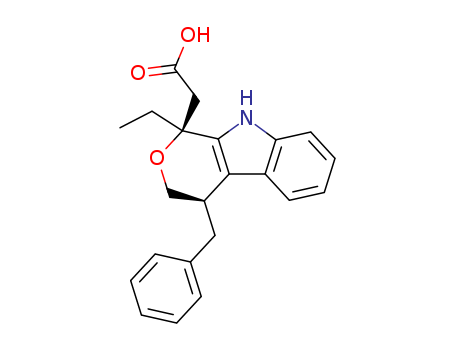Multi-step reaction with 10 steps
1: 95 percent / NaOAc, NH2OH*HCl / ethanol; H2O / 1.) reflux, 5 h, 2.) room temperature, overnoght
2: 80 percent / HCl, H2 / 5percent Pd/C / ethanol / 4 h / 2068.6 Torr / Ambient temperature
3: 90 percent / LiAlH4 / tetrahydrofuran / 2 h / Heating
4: 94 percent / 18 h / Ambient temperature
5: 98 percent / 5percent K2CO3 / methanol / 2 h / Heating
6: 64 percent / BF3*Et2O / CH2Cl2 / 16 h
7: 97 percent / 1N HCl / methanol / 24 h / 25 °C
8: 66 percent / H2O, paraformaldehyde / tetrahydrofuran / 2 h / Heating
9: TiCl4 / CH2Cl2; diethyl ether / 0.5 h / -78 °C
10: 10percent aq. NaOH / ethanol / 2 h / Heating
With
hydrogenchloride; sodium hydroxide; lithium aluminium tetrahydride; formaldehyd; boron trifluoride diethyl etherate; hydroxylamine hydrochloride; water; hydrogen; sodium acetate; titanium tetrachloride; potassium carbonate;
palladium on activated charcoal;
In
tetrahydrofuran; methanol; diethyl ether; ethanol; dichloromethane; water;
DOI:10.1021/jm00401a029





